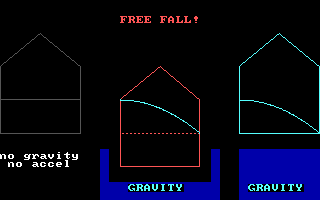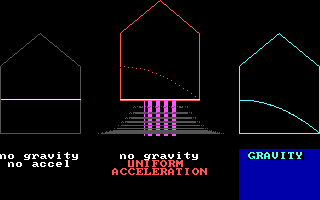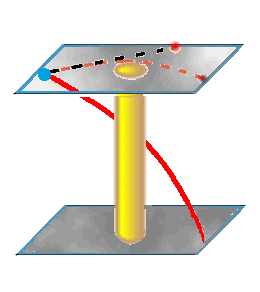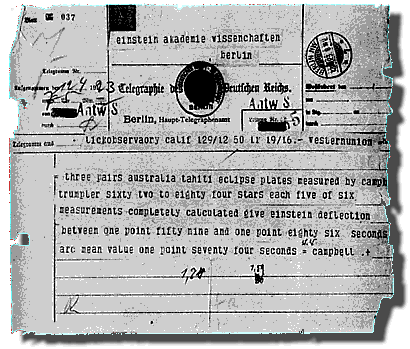
| Home |

|
PREFACE | PRIMEVAL | SPECIAL | GENERAL | CONCLUSION |
| Dictionary | Newton | Equivalence | Einstein | Schwarzschild |
Einstein was looking to extend his Principle of Relativity to more general siutations. In Special Relativity, no physical experiment could distinguish one state of uniform velocity from another. Could this be extended to "no physical experiment could distinguish free motion"?
How does gravity fit into this?
Galileo's Principle of Equivalence:
Inertial mass = Gravitational mass
In other words, given an event and an initial velocity vector,
a particle will travel a definite curve (regardless of its mass
or composition).
 The Equivalence Principle: Free Fall in a Gravitational Field
The Equivalence Principle: Free Fall in a Gravitational Field
 (144 kb)
(144 kb)
 (24 kb)
(24 kb)
 The Equivalence Principle with light rays
The Equivalence Principle with light rays
 (160 kb)
(160 kb)
 (31 kb)
(31 kb)
This led Einstein to predict that light is bent
by the gravitational field around the Sun.

One prediction that Einstein deduced his theory is that starlight will have an angular deflection of 1.75 seconds of arc.
Such an effect was observed in 1919. Astronomers waited until for a good solar eclipse, in order to get a better view of starlight grazing the Sun. The stars appeared shifted from their true positions, which had been obstructed (following a straight-line path) by the Sun.

Recall that light rays "ride" on the Light Cones. If the Light Cones were arranged uniformly, then light would travel in straight lines in spacetime.
| Home |

|
PREFACE | PRIMEVAL | SPECIAL | GENERAL | CONCLUSION |
| Dictionary | Newton | Equivalence | Einstein | Schwarzschild |
 Introducing CURVATURE:
Einstein-Riemann Spacetime
Introducing CURVATURE:
Einstein-Riemann Spacetime